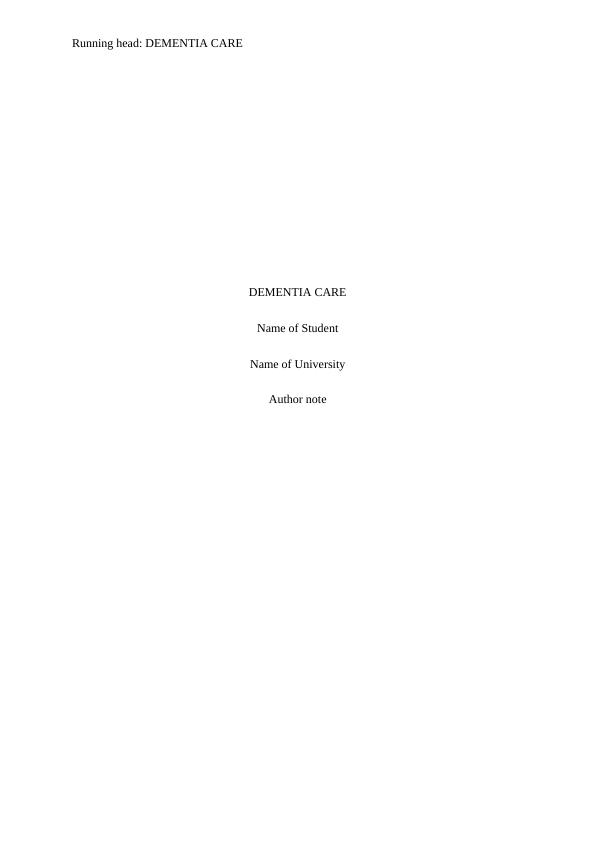Treatment of People with Dementia: Involuntary Movement
5 Pages1232 Words296 Views
Added on 2023-04-24
About This Document
This document discusses the treatment of people with dementia and involuntary movement. It covers the symptoms, medications, and therapies used to manage dementia. The document also highlights the importance of occupational therapy, music therapy, and art therapy in managing dementia. The subject is relevant to healthcare professionals, caregivers, and students studying healthcare. The document type is an essay, and the type of assignment is a research paper. The course code, course name, and college/university are not mentioned.
Treatment of People with Dementia: Involuntary Movement
Added on 2023-04-24
ShareRelated Documents
End of preview
Want to access all the pages? Upload your documents or become a member.
These tangles and plaques in the brain
|4
|792
|23
Alzheimer and Parkinson Disease, Neurotransmitters, Symptoms and Drugs
|8
|1636
|470
HNB3209 - Report on Nursing and The Community
|12
|3009
|98
Alzheimer Disease Project PDF
|14
|3441
|143
Parkinson's disease - Symptoms
|7
|1693
|23
Nursing Care Assignment | Dementia Care Assignment
|10
|2199
|115


